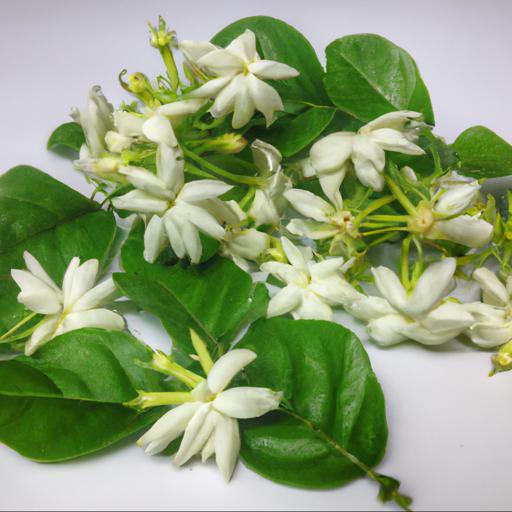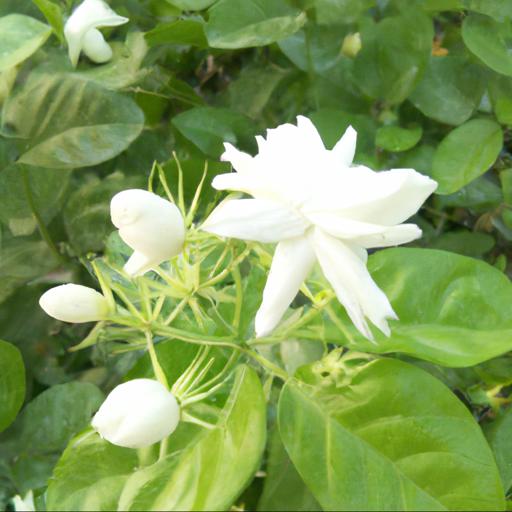Jasminum officinale, commonly known as common jasmine, is a flowering shrub native to the tropical and warm temperate regions of Eurasia. It is widely cultivated for its fragrant flowers, which are used in perfumes, teas, and jellies. The plant is also known for its medicinal properties, being used in traditional Chinese medicine and Ayurveda for a variety of ailments.
In this blog, we will explore the many benefits of Jasminum officinale, from its use as a fragrant flower to its medicinal properties. We will also look at how to grow and care for the plant, as well as discuss its various uses in traditional medicine.
Health benefits of jasminum officinale

Jasminum officinale, more commonly known as the common jasmine plant, is a unique and fragrant species of flowering shrub that can be found in many countries around the world. Commonly used in floral arrangements and as a garden ornamental, this plant has a number of health benefits that may be worth exploring.
For centuries, the flowers and leaves of jasmine have been used to soothe the mind, improve sleep, and calm anxiety. In some parts of the world, even its essential oils are used to treat a range of illnesses and diseases. Jasmine contains a number of compounds known to help promote wellbeing and maintain health.
Some of these compounds include flavanoids, glycosides, terpenoids and phenolics, which operate together to offer a variety of benefits. Research has shown that regular consumption of Jasminum officinale leaves can help relieve pain, reduce inflammation, promote digestion, and improve circulation. In addition, studies suggest that extracts from the plant can afford protection against some infections, cancer and cardiovascular diseases.
Another major benefit of jasmine is its natural aroma. Not only does it provide a pleasant smell, experts also believe that its fragrance has a calming effect on the brain.
This, in turn, may have a positive effect on mood and anxiety levels. Thus, if you’re looking for a charm to go with your garden and a mood and health booster, you can’t go wrong with a common jasmine plant!
Uses of jasminum officinale

:Jasminum officinale, commonly known as the “common jasmine” is an evergreen shrub that has fragrant white star-shaped flowers, making them popular in UK gardens. There are many uses of this plant, ranging from ornamental to medicinal.
This makes it a great addition to any garden as it can have both practical and aestethical applications. First and foremost, Jasminum officinale can be used as an ornamental plant. The common jasmine’s long flowering period, starting with early summer and ending in late autumn, often make it one the most desirable plants for a UK garden.
It’s evergreen nature also allows for it to stay vibrant and lush all year round. This adds to a garden’s beauty and can be used to add more colour and life during winter months.
Another use of Jasminum officinale is for medicinal purposes. Jasmine blooms, when brewed into a tea, offer many benefits. This includes boosting the metabolism, calming nerves, and providing antioxidants.
Jasmine also has antiseptic properties, making it beneficial for treating skin illnesses and injuries. It is believed that jasmine also has positive effects for those suffering from depression.
It can offer a sense of calmness and create a sense of wellbeing. Finally, the fragrant flowers of the common jasmine are often used in perfumes, soaps, and candles. The Essential Oil of the Jasminum officinale is derived from its white, sweet smelling flowers and has multiple uses as it provides fragrance and can help to reduce stress, pain, and cough.
It is also used as an air freshener and bug repellant. Overall, Jasminum officinale is an essential plant to have in a UK garden. Not only can it add a beautiful touch of fragrant colour to the garden with its white flowers, but it also has functional uses such as providing medicinal and aromatherapy benefits. So if you want to enhance the value and beauty of your garden, add a Jasminum officinale!
Growing and caring for jasminum officinale

Jasminum officinale, or ‘Common Jasmine’, is a hardy and fragrant plant that can bring long lasting beauty to any garden. Hardy in USDA zones 7-10, this deciduous vining shrub offers a bright, white and fragrant blooms in the spring and summer months. Growing jasminum officinale is quite easy to achieve and maintain.
It is tolerant to some shade but best blooms when grown in full sun. Proper soil conditions must be provided with a sandy-loam soil and neutral to acidic soil pH.
Re-potting is suggested to occur during late spring and mulching must be done during the winter months. Pruning during the late-winter will encourages growth during the spring. To ensure that your jasminum officinale is healthy, it must receive fertilization during the summer months, as well as sufficient levels of water.
Pests and diseases such spider mites and powdery mildew can be dealt with a dedicated application of some soap-and-water mixture and removal of affected leaves and branches. Generally speaking, jasminum officinale is quite a resilient plant that can thrive in most moderate climates.
To ensure your plant provides years of satisfaction and beauty, it is important to acknowledge its unique needs and provide the adequate care throughout the seasons.
Our video recommendation
Conclusion
Jasminum officinale, commonly known as jasmine, is a flowering plant of the olive family. It is native to tropical and subtropical regions of the Old World and is widely cultivated for its fragrant flowers.
The flowers are used in perfumes and in traditional medicine to treat a variety of ailments. Jasmine tea is made from the buds and flowers of the plant and is known for its calming and soothing effects. Jasmine is also used in traditional Chinese medicine to treat skin conditions, digestive issues, and to boost energy.
It is an important part of many cultures and its sweet scent is used to symbolize love and beauty.
FAQ
What are the common names for Jasminum officinale?
Common names for Jasminum officinale include common jasmine, poet’s jasmine, and true jasmine.
What are the health benefits of Jasminum officinale?
The health benefits of Jasminum officinale include its ability to reduce inflammation, improve skin health, reduce anxiety, improve digestion, boost the immune system, and reduce the risk of certain cancers. It is also known to have anti-bacterial, anti-fungal, and anti-viral properties.
How is Jasminum officinale used in traditional medicine?
Jasminum officinale is used in traditional medicine as an antiseptic, anti-inflammatory, and analgesic. It is also used to treat skin conditions, such as eczema, psoriasis, and acne. It is also used to treat respiratory conditions, such as asthma, bronchitis, and coughs.
What is the optimal growing environment for Jasminum officinale?
The optimal growing environment for Jasminum officinale is full sun to partial shade, with well-drained, fertile soil and regular watering.
What are the chemical constituents of Jasminum officinale?
The chemical constituents of Jasminum officinale include benzyl acetate, linalool, farnesol, geraniol, and indole.
How can Jasminum officinale be used in aromatherapy?
Jasminum officinale can be used in aromatherapy by diffusing its essential oil in a diffuser or by adding a few drops of the oil to a carrier oil and massaging it into the skin. The oil is said to have a calming and uplifting effect on the mind and body.

